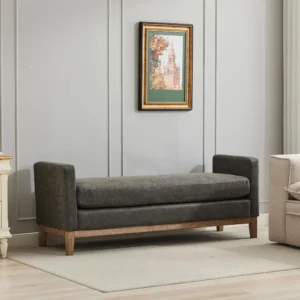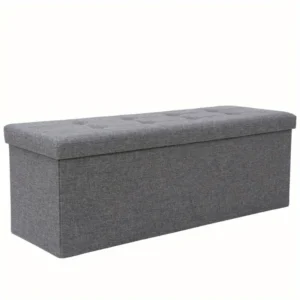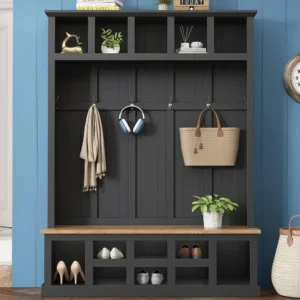The Significance of Choosing the Right Bench for Your Hall Tree
Hall trees represent the ultimate in entryway furniture, combining multiple functions in one cohesive piece. These versatile fixtures merge storage capabilities with seating and organizational features, creating a one-stop solution for busy entryways. At the heart of every hall tree lies its bench component – the foundation that determines not only comfort but also functionality and visual appeal.
The bench portion of your hall tree serves several critical purposes:
- It provides a comfortable place to sit while putting on or removing shoes
- It establishes the footprint and scale of the entire hall tree unit
- It determines storage capacity for your entryway essentials
- It sets the tone for your home’s first impression
Selecting the right bench style isn’t merely about aesthetics – it directly impacts how you’ll use your entryway daily. The perfect bench balances your practical needs with design preferences that complement your home. A well-chosen hall tree for entryways transforms chaotic arrivals and departures into smooth transitions.
Whether you struggle with shoe clutter, need a spot to drop bags and keys, or simply want a welcoming place to sit, your bench selection will address these challenges. In this guide, we’ll explore the diverse world of hall tree bench styles to help you discover your ideal match.
Storage-Focused Hall Tree Bench Options: Maximize Your Entryway Space
When space optimization ranks high on your priority list, storage-focused benches deliver exceptional functionality. These workhorse designs tackle entryway clutter head-on by incorporating clever storage solutions into their structure. For families with children, busy households, or smaller homes, entryway bench storage options offer practical solutions to everyday organization challenges.
Storage benches transform otherwise wasted space into valuable organization zones, allowing you to tuck away seasonal items, rarely-used accessories, and daily essentials. Most standard hall tree storage benches measure between 36-48 inches (91-122 cm) wide, providing ample seating and storage capacity without overwhelming your space.
Lift-Top Storage Benches: Hidden Organization
Lift-top storage benches feature a hinged seat that opens to reveal a generous storage compartment underneath. This design creates a clean, uncluttered appearance while maximizing internal storage volume. The concealed storage area typically offers 3-5 cubic feet (85-140 liters) of space – perfect for items you want nearby but out of sight.
These benches excel at storing:
– Seasonal items like winter gloves and scarves
– Extra throw blankets or pillows
– Rarely used gear and accessories
– Children’s outdoor toys
Quality lift-top designs include safety features like soft-close hinges that prevent fingers from getting pinched. When shopping for shoe storage benches, check the weight capacity for both seating and storage to ensure durability through daily use.
Drawer-Based Storage Benches: Accessible Organization
Drawer storage benches provide superior accessibility compared to lift-top designs. Instead of lifting the entire seat, you simply slide out individual drawers to access contents. This design allows for better organization of smaller items and prevents the “bottom of the bin” syndrome where things get lost under piles.
Drawer configurations vary widely:
– Single large drawer spanning the bench width
– Multiple smaller drawers for categorized storage
– Combination designs with drawers and open shelving
When evaluating entryway benches with drawers, pay attention to construction quality indicators like dovetail joints, smooth drawer slides, and sturdy handles. Typical drawer heights range from 6-8 inches (15-20 cm), providing ample space for organized storage without sacrificing structural integrity.
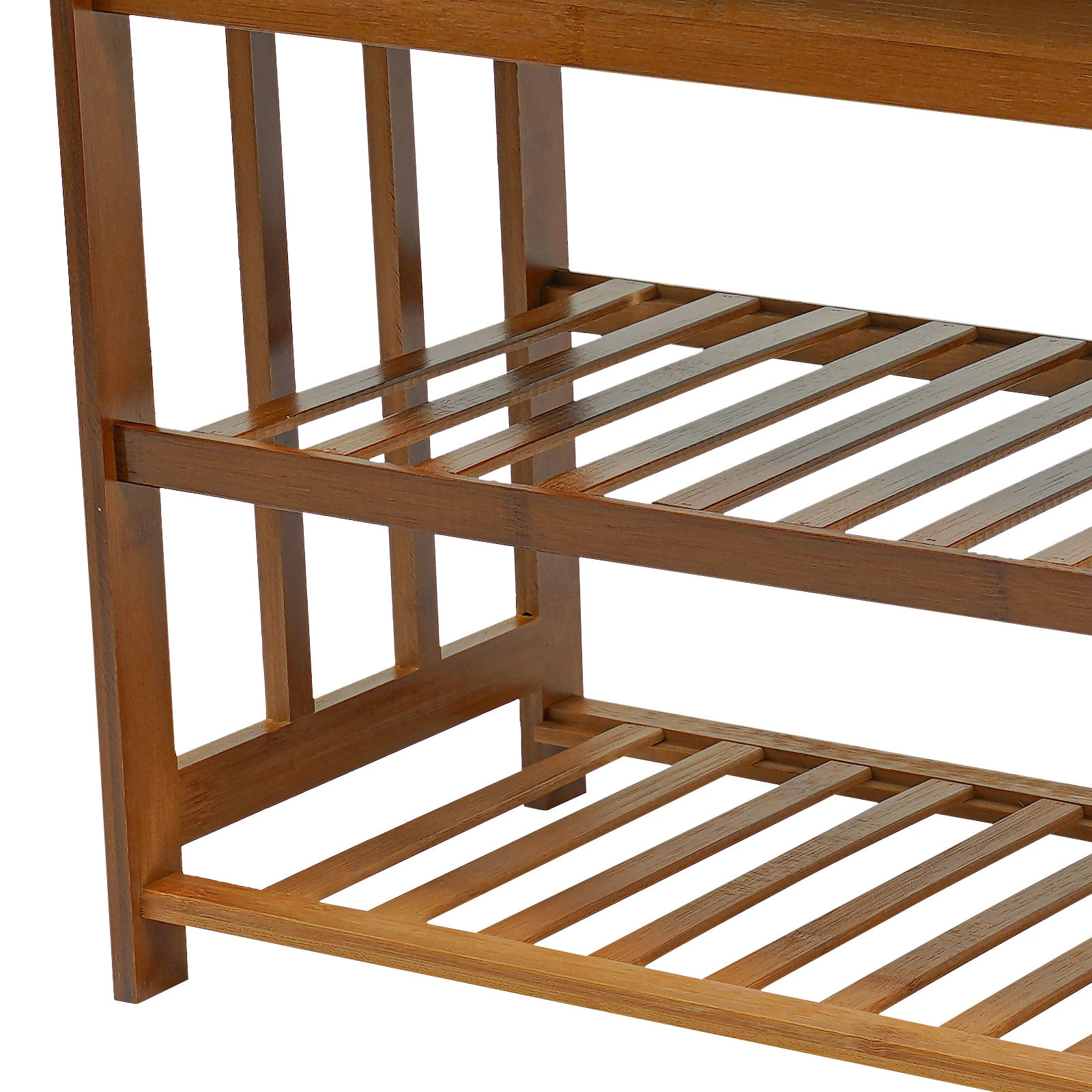
Open Cubby Benches: Visible Storage Solutions
Open cubby benches bring accessibility and ventilation advantages to entryway storage. With compartments typically measuring around 12×12 inches (30×30 cm), these cubbies create designated spaces for shoes, baskets, and everyday items. The open design promotes air circulation – particularly beneficial for damp shoes after rainy days.
Many homeowners enhance cubby organization with decorative baskets that:
– Contain smaller items that would otherwise look cluttered
– Add texture and visual interest to the entryway
– Allow for quick clean-up by simply tucking items into baskets
– Create a cohesive look through matching containers
While shoe cubby benches offer unmatched accessibility, they do require more thoughtful organization to prevent a messy appearance. The visual exposure means items are always on display, which can motivate better organization habits but may not suit those who prefer hidden storage.
Comfort-Focused Hall Tree Bench Styles: Blending Aesthetics with Function
While storage often dominates the hall tree conversation, seating comfort deserves equal consideration. Comfort-focused bench designs prioritize pleasant seating experiences while still maintaining functional elements. These benches transform your entryway from a mere transitional space into a welcoming area where people naturally want to linger.
Optimal seating comfort begins with proper dimensions. Look for benches with a seat height between 17-19 inches (43-48 cm) and depth between 15-18 inches (38-46 cm). These measurements accommodate most adults comfortably while allowing feet to rest flat on the floor – crucial for shoe changing.
The right small bench for your entryway combines these ergonomic measurements with aesthetically pleasing elements that complement your home’s style. Whether you prefer plush upholstery or sleek minimalist designs, comfort-focused benches enhance both the function and appearance of your hall tree setup.
Upholstered Hall Tree Benches: Style Meets Comfort
Upholstered benches introduce softness and texture to entryway designs that might otherwise feel utilitarian. These benches feature padded seats with fabric, leather, or vinyl coverings that provide superior comfort for longer sitting periods. Cushion thickness typically ranges from 2-4 inches (5-10 cm), with thicker cushions offering more comfort but potentially reducing overall storage capacity.
When selecting entryway benches with cushions, consider these factors:
- Fabric durability (look for performance fabrics like Crypton, Sunbrella, or microfiber)
- Cleaning requirements (removable, washable covers offer practical advantages)
- Pattern and color durability in high-traffic areas
- Complementary colors that enhance your existing décor
Upholstered benches work particularly well in traditional, transitional, and contemporary homes, where they soften hard architectural elements and create inviting seating areas. Their visual warmth makes them excellent choices for establishing a welcoming first impression.
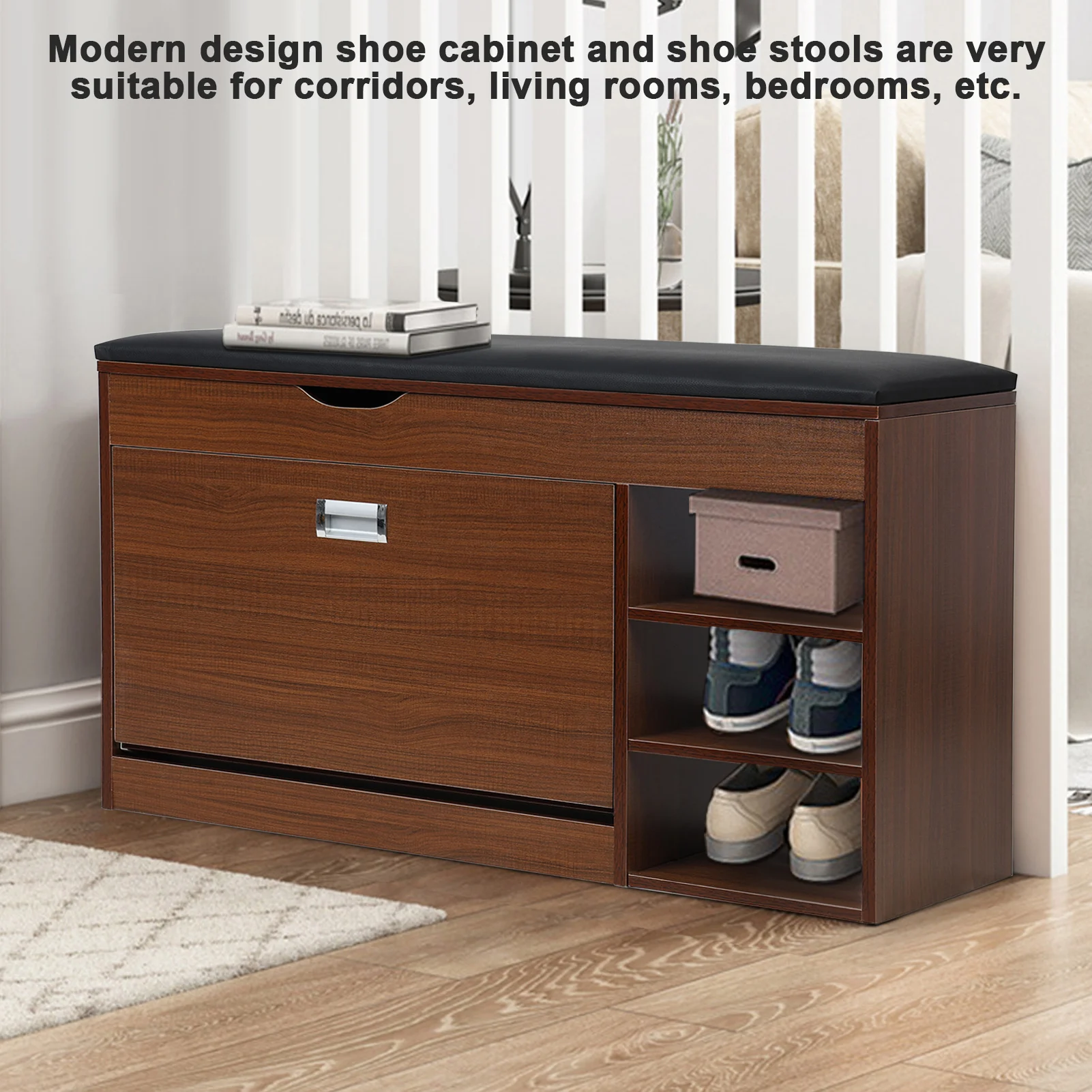
Wooden Bench Designs: Classic and Timeless
Wooden entryway benches offer timeless appeal with exceptional durability. These benches typically feature either slatted designs that provide visual lightness or solid plank construction that emphasizes sturdiness. Wood options range from affordable pine and rubberwood to premium hardwoods like oak, maple, and walnut – each bringing distinct grain patterns and color characteristics.
The finish significantly impacts both appearance and maintenance requirements:
– Natural oil finishes highlight wood grain but require periodic refreshing
– Painted finishes offer unlimited color options and easier touch-ups
– Polyurethane or lacquer finishes provide durable protection with minimal maintenance
Most wooden benches support 250-400 pounds (113-181 kg), making them suitable for multiple users. Their enduring appeal means they remain stylish through changing design trends, making them excellent investment pieces for long-term use.
Metal and Mixed-Material Benches: Contemporary Edge
Metal-framed benches with wood, upholstery, or glass elements create distinctive contemporary statements in entryways. These mixed-material designs often feature powder-coated steel, wrought iron, or brushed nickel components that provide structural integrity while allowing for creative seat materials.
The industrial aesthetic works particularly well in:
– Urban lofts and apartments
– Contemporary home designs
– Transitional spaces blending traditional and modern elements
When picking the right bench for your hall tree, metal options offer exceptional durability with typical weight capacities of 300-350 pounds (136-159 kg). Their slim profiles often make them suitable for smaller spaces where bulkier wooden designs might overwhelm the area.
Structural Integration: How Benches Connect to Your Hall Tree Design
The relationship between your bench and the vertical components of your hall tree significantly impacts both aesthetics and functionality. This structural integration determines how the pieces work together, affecting everything from stability to visual cohesion. Different integration approaches suit various spaces, preferences, and practical needs.
The way your bench connects to the hall tree framework influences:
– Overall stability and weight distribution
– Visual continuity and design cohesion
– Assembly and installation requirements
– Flexibility for future reconfigurations
Understanding these integration options helps you select a hall tree system that works with your space constraints while delivering the functionality you need. Space-saving benches work particularly well in compact entryways where every inch matters.
Built-In Benches: Seamless Integration
Built-in hall tree benches connect directly to the vertical storage components, creating a unified piece of furniture. This integrated design offers several structural advantages:
– Enhanced stability through connected components
– Unified visual appearance with matching materials and finishes
– Optimized proportions between seating and storage elements
– Simplified placement and installation (one unit instead of multiple pieces)
Typical dimensions for these integrated units range from 60-72 inches (152-183 cm) in height and 36-48 inches (91-122 cm) in width. The seamless connection between bench and upper storage creates a cohesive look particularly well-suited to traditional, craftsman, and farmhouse styles.
Many hall tree designs feature built-in benches that share construction materials and design elements with the vertical components. This continuity creates a furniture-quality appearance that enhances your entryway’s overall aesthetic while providing maximum functionality.
Modular and Separate Bench Options: Flexibility First
Modular hall tree systems separate the bench from vertical storage components, allowing for independent placement and potential reconfiguration. This approach offers adaptability for changing needs or challenging spaces:
– Ability to position components to fit awkward architectural features
– Opportunity to replace individual pieces without changing the entire unit
– Flexibility to adjust spacing between components (typically 1-2 inches/2.5-5 cm)
– Option to use the bench independently in other locations when needed
For those who organize small entryways with benches, modular components offer creative solutions to space constraints. You might position the bench perpendicular to wall hooks or place vertical storage at an angle while keeping the bench flush against the wall – adaptations impossible with fixed integrated units.
Entryway Bench with Cushion, Mudroom Bench with Cushion, Shoe Bench for Entryway
$1,186.63 Select options This product has multiple variants. The options may be chosen on the product pageEntryway Bench with Back, Modern Entryway Bench, Shoe Bench for Entryway
Price range: $463.13 through $474.44 Select options This product has multiple variants. The options may be chosen on the product pageEntryway Bench with Shelf Storage, Shoe Bench for Entryway, Shoe Storage Bench
$194.08 Select options This product has multiple variants. The options may be chosen on the product pageCorner Entryway Bench, Entryway Bench with Cushion, Modern Entryway Bench, Shoe Bench for Entryway
$476.34 Select options This product has multiple variants. The options may be chosen on the product pageBench with Hooks and Storage, Entryway Hall Tree, Mudroom Bench with Cubbies, Mudroom Bench with Shoe Storage
$818.38 Select options This product has multiple variants. The options may be chosen on the product pageModern Entryway Bench, Wood Entryway Bench, Wood Mudroom Bench
$497.69 Select options This product has multiple variants. The options may be chosen on the product page
Selecting the Perfect Hall Tree Bench: Key Considerations for Your Home
Finding your ideal hall tree bench requires balancing multiple factors. This decision framework helps you prioritize what matters most for your specific situation:
Measure available space carefully
Consider both width and depth, including door clearance and traffic patterns. Allow minimum walkway clearance of 36 inches (91 cm) for comfortable passage.Identify your primary use case
Do you need maximum storage, superior seating comfort, or a balance of both? This helps narrow your bench style options.Consider your household size and typical users
Larger households might prioritize extensive storage, while couples might focus more on aesthetics and comfort.Evaluate compatibility with your home’s design style
Your hall tree bench should complement existing architectural elements and furniture styles.Assess material durability needs
High-traffic homes with children and pets require more durable materials than quieter households.Establish your budget parameters
Quality hall tree benches range widely in price depending on materials, construction quality, and design sophistication.
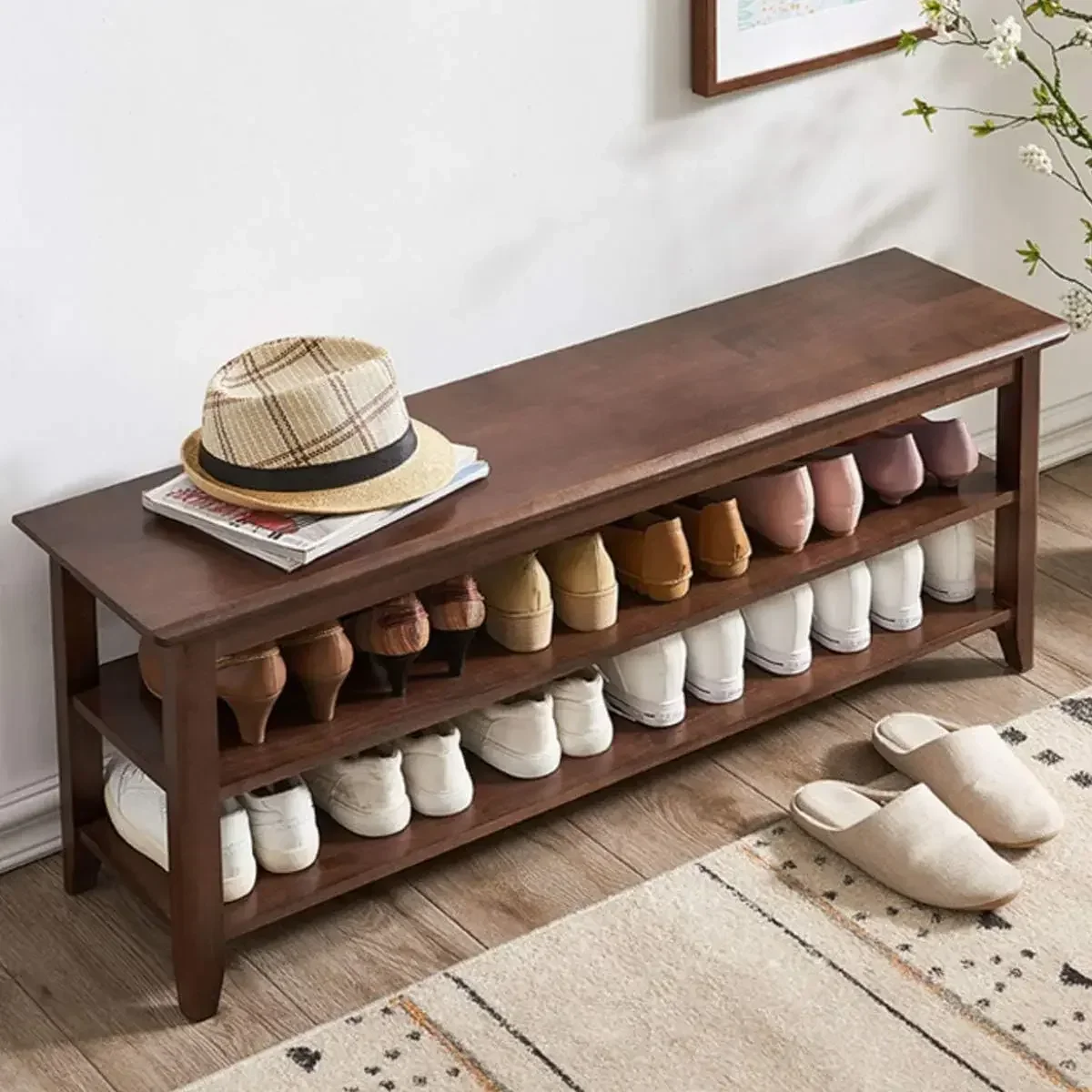
Space Planning: Finding the Right Fit
Proper space planning ensures your hall tree bench enhances rather than hinders your entryway functionality. Begin by measuring your available wall space and floor area, accounting for door swings, existing furniture, and traffic patterns. Remember that the bench will extend into the room, so depth measurements are just as crucial as width.
Based on available space, consider these bench size categories:
– Compact benches: 24-30 inches (61-76 cm) wide – ideal for small apartments or narrow hallways
– Standard benches: 36-48 inches (91-122 cm) wide – suitable for most average homes
– Large benches: 48-60+ inches (122-152+ cm) wide – appropriate for spacious entryways
Narrow entryway benches work particularly well in urban apartments and smaller homes where space comes at a premium. These slimmer designs preserve traffic flow while still providing essential functionality.
Hall Tree Bench Styles for Different Home Aesthetics
Your hall tree bench makes a style statement that sets the tone for your entire home. Different bench styles naturally complement specific home aesthetics, creating visual harmony from the moment someone enters your space. By matching bench design elements to your existing décor, you create a cohesive first impression.
The most successful hall tree installations consider these style alignments:
– Material selections that echo other furniture pieces
– Finish colors that coordinate with your overall palette
– Hardware styles that match existing door handles and light fixtures
– Proportions that reflect your home’s scale and architectural features
Modern entryway benches suit contemporary homes, while more ornate designs complement traditional spaces. Let’s explore specific bench styles for popular home aesthetics.
Modern and Minimalist Benches
Modern and minimalist hall tree benches feature clean lines, uncluttered silhouettes, and a focus on function without unnecessary ornamentation. These designs emphasize geometric shapes, sleek surfaces, and visually lightweight appearances that create an open, airy feeling in the entryway.
Key characteristics include:
– Flush surfaces with hidden or minimal hardware
– Straight lines and right angles (occasionally with subtle curved elements)
– Monochromatic color schemes with occasional bold accent colors
– Materials like powder-coated metal, glass, engineered wood, and high-gloss finishes
These benches particularly complement mid-century modern, Scandinavian, and contemporary architectural styles. Their streamlined appearance works well in smaller spaces where visual clutter would feel overwhelming.
Traditional and Classic Bench Designs
Traditional hall tree benches feature timeless design elements that reference historical furniture styles. These benches often showcase craftsmanship details like turned legs, decorative moldings, and substantial proportions that convey stability and permanence.
Distinctive features include:
– Curved or contoured elements like scrolled arms or cabriolet legs
– Ornamental details such as fluting, reeding, or carved accents
– Rich wood tones from cherry, mahogany, oak, or walnut
– Tufted upholstery, nailhead trim, or decorative fabric patterns
These designs complement Colonial, Victorian, Craftsman, and other classic architectural styles. Their substantial presence creates a formal, welcoming atmosphere suitable for established homes with traditional décor elements.
How to Care for and Maintain Your Hall Tree Bench
Proper maintenance ensures your hall tree bench remains beautiful and functional for years to come. Different materials require specific care approaches to preserve their appearance and structural integrity.
Wood Care:
– Dust regularly with a soft, slightly damp cloth
– Apply wood polish or conditioner every 3-6 months
– Address scratches immediately with touch-up markers or wax sticks
– Maintain consistent indoor humidity levels to prevent warping
– Avoid placing wood benches in direct sunlight to prevent fading
Upholstery Care:
– Vacuum fabric surfaces weekly to remove dust and debris
– Treat spills immediately by blotting (not rubbing) with a clean cloth
– Apply fabric protector spray to new upholstered benches
– Follow manufacturer recommendations for spot cleaning solutions
– Consider professional cleaning annually for heavily used benches
Metal Care:
– Wipe regularly with a soft cloth to remove fingerprints
– Apply appropriate metal polish (brass, chrome, etc.) as needed
– Touch up any paint chips promptly to prevent rust
– Tighten hardware regularly to maintain structural integrity
– Check for and address any rust spots immediately
Bench Style Inspiration: Real-Life Hall Tree Applications
Different households face unique entryway challenges. These real-life scenarios demonstrate how thoughtful bench selection addresses specific needs:
The Family Command Center: A busy household with three children chose a hall tree with a lift-top bench and multiple hooks. The generous storage bench contains seasonal sports equipment, while designated hooks for each family member prevent morning chaos. A cushioned bench top provides comfortable seating for children putting on shoes.
The Compact City Apartment: A couple in a small urban apartment selected a narrow hall tree with a metal frame and wood seat. The slim profile preserves precious floor space, while the bench provides essential seating for removing shoes. Wall-mounted components above maximize vertical storage without consuming floor area.
The Classic Colonial Home: The owners of a traditional Colonial selected a built-in hall tree bench with raised panel details and turned spindles. The substantial wooden bench harmonizes with existing trim and moldings while providing ample seating. Drawers below organize gloves and scarves, maintaining the home’s elegant, uncluttered appearance.
By identifying your specific entryway challenges and aesthetic preferences, you can select a hall tree bench that beautifully solves your practical needs while enhancing your home’s first impression.


